Discover simple and effective recipes for homemade ointments against fungus between the toes. Get rid of the problem with the help of folk remedies without the use of chemicals and drugs.
Fungus between the toes is a common problem that causes not only physical discomfort, but also mental distress. Drugs are usually used to treat this disease, but they have a series of rather serious side effects and are not always effective. In this regard, more and more people prefer to treat mushrooms between the fingers with traditional methods.
For those who want to get rid of fungus between the toes using folk remedies, there are many effective recipes for homemade ointments that can be prepared quickly and easily. They contain only natural ingredients, do not cause side effects and are very useful in fighting fungal infections.
In this article we will look at some of the most effective homemade ointment recipes for treating fungus between the toes. Each of them has its own characteristics and advantages, but they all work in the same way as drugs and do not cause harm to your health.
It is important to understand that no recipes for homemade ointments can replace professional advice from a specialist. Before you start using any of these recipes, you should consult your doctor.
Treatment of fungus between the toes with folk remedies
Toe fungus is a common problem that can lead to itching, burning sensation, and inflammation. Despite the fact that there are many pharmaceutical preparations for the treatment of fungi, many people prefer to use folk remedies, as they believe that they are more gentle and safe for health.
One of the most effective folk remedies for treating fungus between the fingers is the treatment of diseased areas of the skin with iodine. Iodine contains antiseptic properties that can kill fungi and prevent them from spreading. However, caution should be exercised as some people may be allergic to iodine.
Another folk remedy for treating fungus between the fingers is the use of homemade ointments. For example, you can mix equal parts of garlic juice and olive oil and apply to the affected areas of the skin, then wrap your feet in a towel and leave overnight. Garlic has antibacterial properties and can help treat fungus.
- You can also use acetic acid to treat fungus between your toes. To do this, you need to dilute a small amount of vinegar in warm water and soak the sore leg in the solution for 15-20 minutes every day until the fungus disappears.
- Another way to treat mushrooms between the fingers is to use a painted infusion. To prepare it you need to mix equal parts of black elderberry, St. John's wort, celandine, nettle and mint. Pour 1 liter of boiling water and leave for about 30 minutes. Apply to diseased skin 2-3 times a day for two weeks.
In any case, before using traditional methods of treating fungus between the fingers, you should definitely consult a doctor, since some folk remedies can cause allergic reactions or exacerbation of existing diseases. It is also important to maintain hygiene, keep your shoes in good condition and wear loose, breathable socks.
Causes of fungus between fingers
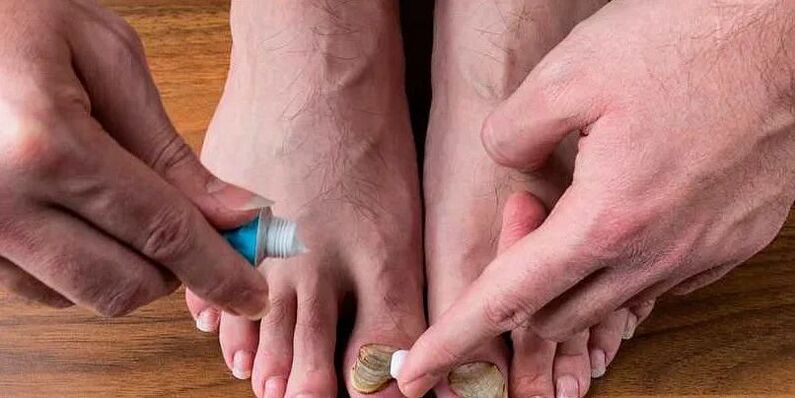
Mycosis of the toes is a common disease caused by fungi of the genus Trichophyton, Microsporum and Epidermophyton. The main cause of fungus is microtraumas between the toes, which are formed due to friction between the toes or wearing tight shoes.
People who do not take care of foot hygiene, wear the same socks for several days in a row or do not treat their shoes after wearing them run the risk of contracting fungi. Additionally, people with compromised immune systems, diabetics, people with circulatory problems in their legs, and people whose jobs require standing for long periods of time are at greater risk of contracting fungal infections.
- Tight shoes and synthetic socks
- Microtraumas between the fingers
- Compromised immune system
- Inaccurate foot hygiene
The best way to prevent fungus between your toes is to follow good hygiene, use shoes and socks made from natural materials, clean your shoes regularly and change your socks once a day. If symptoms of fungus appear between the toes, it is necessary to consult a doctor and start treatment to avoid complications and the spread of the infection to other parts of the body.
Symptoms of fungus between toes
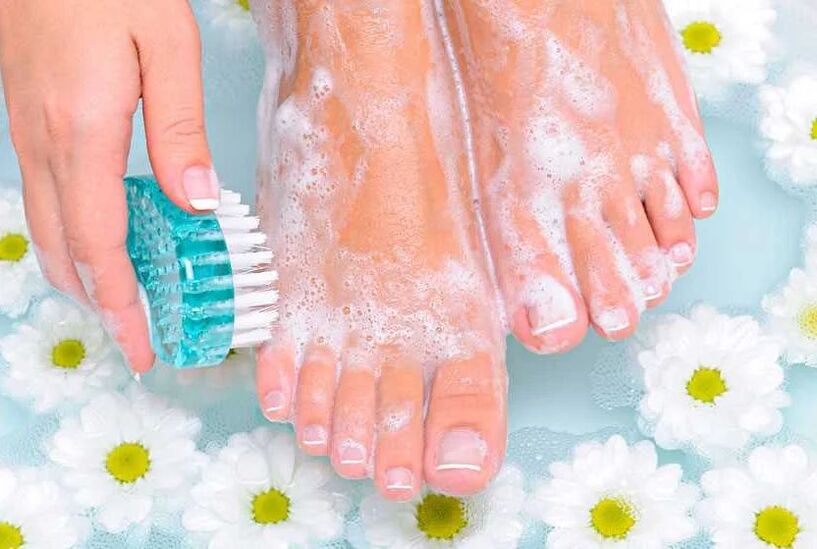
Fungus between the toes is a common disease that occurs when the skin and nails are affected by fungi of the genus Trichophyton, Epidermophyton and Microsporum. The main symptoms of finger fungus include:
- Itching and burning between the fingers. They can be very intense, with symptoms usually worsening in the evening and at night.
- Flaking and cracking of the skin. The skin between the toes usually becomes dry and scaly. Deep cracks may form and cause pain.
- The appearance of blisters and pimples. Some people may have blisters that eventually turn into blisters and then into pimples. They can be very itchy and ooze fluid.
- Unpleasant odor. The affected skin may have an unpleasant odor, especially after wearing shoes for a long time.
If you notice one or more of these symptoms, see a dermatologist for diagnosis and treatment of toe fungus.
Common treatments for fungus between toes
Toe fungus is a common problem that can cause many problems.It forms due to the growth of fungal bacteria and can cause itching, irritation and even bloody cracks. Treating finger fungus can take some time, but with the right techniques the results can be dramatic.
At the beginning of the treatment of fungus between the toes it is necessary to monitor foot hygiene. Fungal treatment should begin by washing your feet once a day and drying them until they are dry immediately after each shower. Additionally, you should wear clean socks and shoes to avoid spreading the fungus to other parts of your body and furnishings.
Another common method for treating fungus between the toes is the use of antimicrobial agents.Many undergarments and creams contain antimicrobial properties that can help kill fungi and prevent their spread. These drugs should be used only after consulting a doctor to avoid possible side effects.
Folk remedies can also be used as a treatment for fungus between the fingers.This may include an ointment made from various oils and herbs, such as chamomile and lavender. You can also use garlic, which is known for its antibacterial and antifungal properties. It should be crushed and applied to the affected areas for 10-15 minutes before rinsing.
The most important thing is to start treating fungus between the toes at an early stage.The earlier treatment is started, the greater the chance of a complete recovery. If the fungus between the toes does not disappear after several weeks of treatment, you should consult a doctor for further advice and recommendations.
What oils help get rid of fungus between the fingers?
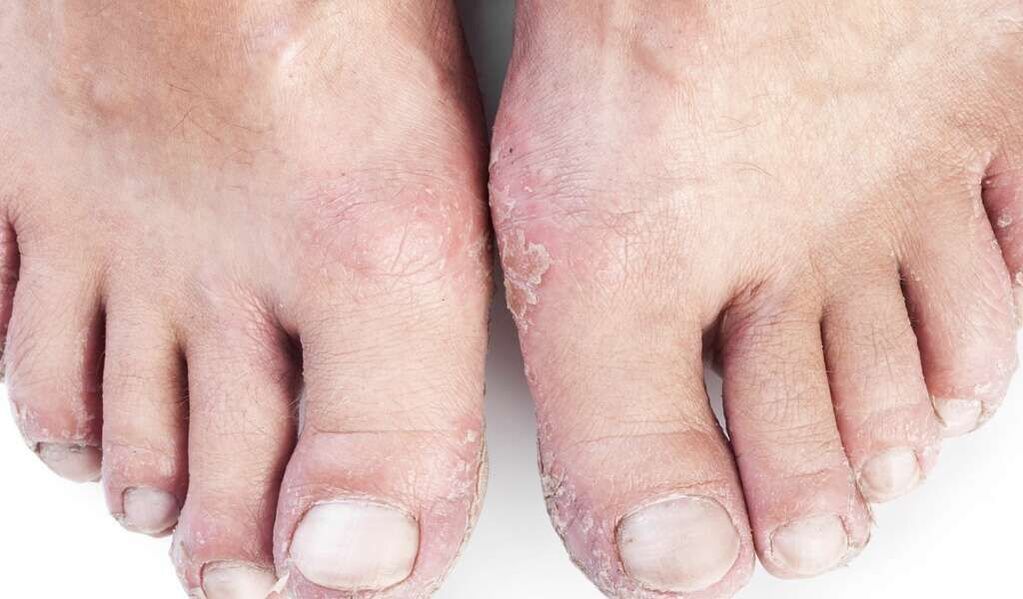
When choosing vegetable oils to treat fungus between the fingers, it is necessary to take into account their antifungal properties and the ability to penetrate into the deep layers of the skin and nails. Here are some of the most effective oils:
- Tea treeit is an oil with strong antifungal and antimicrobial properties that helps destroy fungi and bacteria. It also dries out the skin and reduces inflammation, which helps eliminate toe fungus symptoms faster.
- Origanit is an oil with powerful antifungal properties that can stop the growth of fungal infections. Although it is very concentrated and can cause skin irritation, oregano can be used together with other natural oils to increase its antifungal effect.
- Garlicit is an oil with antibacterial and antifungal properties capable of killing fungi between the toes. It also helps soften the skin and reduce inflammation, reducing pain and itching associated with fungus.
Some other oils that may be helpful in treating fungus on fingers include olive oil, rosemary oil, lavender oil, and eucalyptus oil. It is best to consult your doctor or pharmacist to choose the most appropriate oil based on the severity of the infection and the condition of your skin and nails.
Treatment of fungus between the fingers with vegetable oils
Toe fungus is a common condition that can cause irritation, itching, and even pain. But don't despair, there are natural and effective treatments, even with the use of vegetable oils.
Tea tree is one of the best known ways to fight fungal infections. Tea tree oil can help relieve itching and prevent the infection from spreading. Dip a cotton ball in this oil and apply to the affected areas between your toes two to three times a day.
Olive oil can also be an effective treatment for fungus between the toes. Contains powerful antioxidants that help eliminate fungi and bacteria. Apply olive oil to the affected area several times a day and further massage the oil into the skin by massaging with your fingers.
Vinegar is another simple and inexpensive way to fight foot fungus. Mix equal parts vinegar and water, soak a cotton ball and apply it to the affected skin between your fingers. Don't wash it off! Repeat the procedure every day.
Watch out for dryness between your toes because moisture is a breeding ground for fungi and bacteria. Therefore, after showering, bathing or swimming, it is advisable to remove moisture between the fingers with a soft towel, and to dry them, apply a warm, dry mixture of boric acid and soap to the sore spots.
- So, there are many ways to treat fungus between toes.
- Vegetable oils are one of the most popular and effective methods of treating fungi.
- Color cotton balls with oils, create a mixture of vinegar and water and remember to dry the affected areas.
- Do all these things regularly and you will be able to defeat fungus between your toes.
Effective recipes for homemade ointments to treat fungi
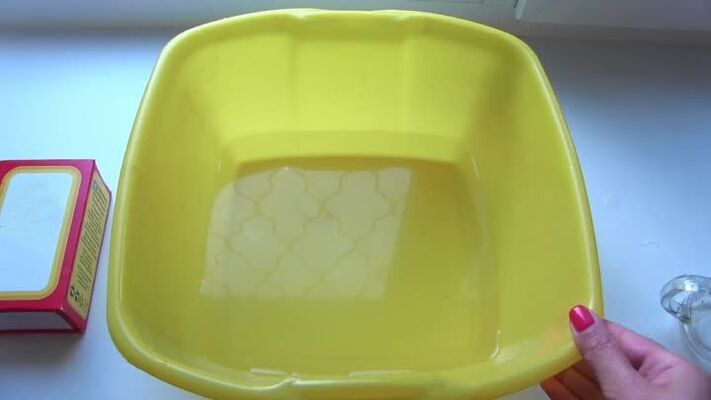
Fungus between the toes often occurs due to insufficient foot hygiene and shoes suitable for this climate. It can cause itching, scaling, redness and an unpleasant odor. To get rid of fungus, you can try one of the effective recipes of homemade ointments.
- Garlic ointment:mince 1-2 cloves of garlic and mix with 1 tablespoon of olive oil. Apply to the affected area 2-3 times a day. Garlic contains antibacterial properties that help eliminate fungi.
- Onion ointment:chop 1 onion and add 3 tablespoons of coconut oil. Let it sit for 24 hours, then mix and apply to the affected area 2-3 times a day. Onions contain antibacterial and antifungal properties that help eliminate fungi.
- Soda ointment:Mix 1 tablespoon of baking soda and 1 tablespoon of water to form a paste. Apply to the affected areas and leave to dry. Baking soda can help stop fungal growth.
It is important to know that these ointments may not be suitable for all people. If the fungus does not go away within a few days or gets worse, you should see a doctor for further testing and treatment.
An effective ointment based on garlic and vegetable oil to treat fungus between the fingers

Fungus between the toes is a fairly common disease that can lead to multiple complications if treatment is not started timely. One of the most effective folk remedies that will help cure fungi is an ointment based on garlic and vegetable oil.
To prepare the ointment you need to take a few cloves of garlic and crush them in a bowl. Then add a small amount of vegetable oil and mix thoroughly. The resulting ointment should be applied to the affected areas, gently massaging it into the skin.
Garlic is an excellent natural antiseptic that helps destroy fungi and prevent their further development. Vegetable oil, in turn, will soften the skin and speed up the healing process. The procedure must be repeated several times a day until complete healing.
It is important to remember that in case of an allergic reaction to garlic or vegetable oil, it is better to stop using the ointment and consult a doctor to prescribe another treatment. It is also not recommended to use the ointment on open wounds or damaged skin to avoid causing further infections.
Ointment based on vegetable oil and bay leaves for the treatment of fungus between the toes
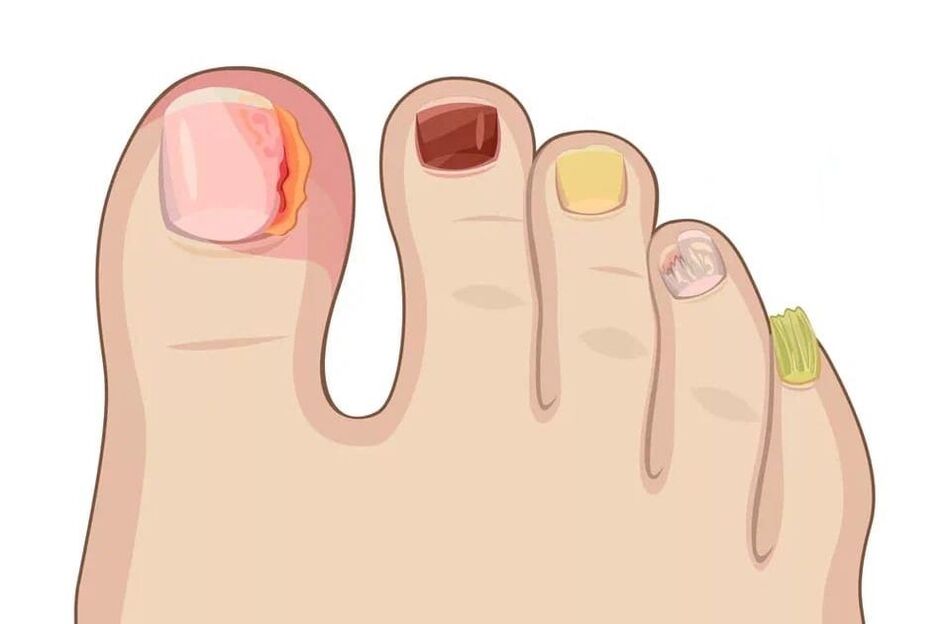
Fungus between the toes can cause discomfort, itching, and discomfort. However, there are many folk remedies that will help in the fight against this disease. An ointment made from vegetable oil and bay leaves is one of the most popular homemade ointment recipes.
To prepare the ointment you need a little vegetable oil and a few bay leaves. Bay leaves need to be crushed and poured with vegetable oil, then the mixture should be left for several days. Subsequently, the ointment can be used to treat fungus between the toes.
Bay leaves have antifungal properties and can kill fungal infections. Vegetable oil gives thickness to the ointment and improves the absorption of the medicinal properties of bay leaf. In addition, vegetable oil moisturizes the skin and reduces itching.
An ointment based on vegetable oil and bay leaves can be used both as a prophylaxis and to treat the initial stage of the fungus between the toes. The ointment should be applied to clean, dry skin between the toes 2-3 times a day for 1-2 weeks. Make sure that the ointment is completely absorbed and does not remain on the surface of the skin.
Sea buckthorn oil and garlic ointment
Fungus between the toes can cause discomfort and itching. An ointment made from sea buckthorn oil and garlic can help treat this condition.
Sea buckthorn oil contains vitamin E and omega-3 fatty acids, which can speed up the skin's healing process. Garlic contains allicin, which has antibacterial properties and can help fight fungi.
To prepare the ointment, chop 2-3 cloves of garlic and mix with 2 tablespoons of sea buckthorn oil. Apply the ointment to the affected areas between the toes and leave for several hours. Repeat the procedure 2-3 times a day.
This ointment can be effective in treating fungus between the toes. However, if symptoms do not improve after several days of treatment, consult a doctor for professional help.
Tea tree oil and lavender ointment
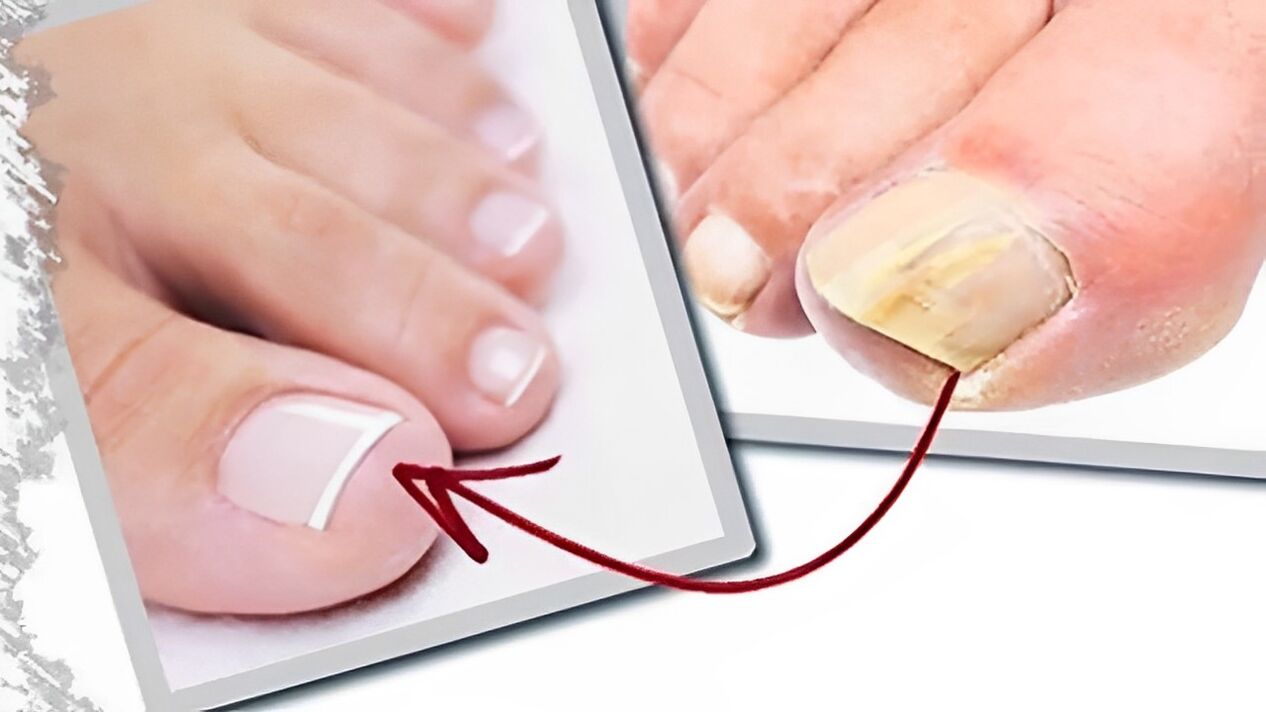
Tea tree oil and lavender ointment is a popular folk remedy for treating fungus between the toes. Both components of the ointment have antibacterial, antiseptic and antifungal properties.
Tea tree oil contains terpenols, which can kill fungi and prevent their further development. Lavender perfectly relieves inflammation and soothes the skin.
To make the ointment, mix 10 drops each of tea tree and lavender oils with 2 tablespoons of base vegetable oil (such as olive or almond). The resulting mixture should be applied to the affected areas of the skin 1-2 times a day in a thin layer. The positive effect will be noticeable after a few days of regular use of the ointment.
It is important to remember that tea tree oil and lavender ointment are for external use only and should not be applied to open wounds or broken skin.
Ointment based on essential oils and aloe vera for the treatment of fungus between the toes
Fungus between the toes can be an unpleasant and painful condition. It can cause persistent itching, burning, and the spread of germs to other parts of the body. One way to treat fungus is to use an ointment made from essential oils and aloe vera. These natural ingredients are known for their antifungal properties, which can help clear up the infection quickly.
To make an ointment, mix a few drops of tea tree and lavender essential oils with a small amount of aloe vera. After mixing these ingredients, apply the resulting ointment to the affected areas between your toes. Lavender has a soothing effect on the skin and helps reduce the risk of germs growing in the area.
This is a natural solution to treat toe fungus, but remember that you need to use it regularly for best results. Also, if fungal symptoms continue to appear after using this ointment, be sure to consult a doctor.
Aloe vera and essential oils are effective and natural solutions for treating toe fungus. Their use as a base for ointments can reduce treatment times and improve the overall condition of the skin.
Treatment of fungus between the fingers based on folk knowledge and traditions
Fungus between the toes not only causes discomfort, but can also lead to serious health problems. Therefore, it is important not to delay treatment and use all available means, including traditional medicine.
One of the effective folk remedies is garlic ointment. To prepare it you need to mince a few cloves of garlic and mix them with vegetable oil. The resulting mass is applied to the affected areas of the skin before bedtime and left overnight, then washed off with warm water.
Another popular recipe is an ointment made from clay and vinegar. To prepare it you need to mix white clay and apple cider vinegar in equal proportions, add a little water to get the consistency of the ointment. It is recommended to apply this ointment to the affected areas of the skin twice a day.
- To speed up the healing process, it is recommended to treat the skin with essential oils, such as tea tree oil or lavender.
- It is also useful to use an ointment based on Kalanchoe. To prepare it you need to grind the leaves of the plant and mix them with petroleum jelly or oil. This ointment should be applied to the affected areas of the skin several times a day.
It is important to understand that folk remedies are not a panacea and do not replace comprehensive treatment, therefore, if you have a fungal infection, you should consult a doctor and follow his recommendations.
Regular foot care to prevent fungus from forming between the toes
Toenail mycosis is a common condition that occurs due to several factors such as excessive humidity, tight shoes, poor hygiene, etc. To prevent toenail fungus, it is important to maintain regular foot care.
The first step in foot care is to wash them every day with warm water and soap, then dry them with a towel. Dry your toes thoroughly, as this area is an ideal environment for fungal growth.
It is important to wear comfortable shoes made of breathable materials that allow your feet to breathe. At certain times, if possible, make sure that the shoes are broken in and do not cause discomfort.
If necessary, apply ointment and antifungal medications to your feet as recommended by your doctor or pharmacist. Also, take care of your nails, cut them regularly and wash your feet after visiting the swimming pool or public places.
- Wash your feet daily with warm water and soap and dry them thoroughly between your toes.
- Wear comfortable shoes made of breathable materials that allow your feet to breathe.
- If necessary, apply ointment and antifungal medications to your feet as recommended by your doctor or pharmacist.
- Take care of your nails, trim them regularly and wash your feet after visiting the pool or public areas.
General measures to avoid the formation of fungus between the toes

Fungus between the toes is a fairly common disease that can affect anyone. To avoid this unpleasant phenomenon it is advisable to adopt various precautions.
- Maintain good hygiene.Wash your feet regularly and dry them thoroughly. Don't forget the spaces between your fingers.
- Use only your own shoes and socks.Don't wear someone else's shoes or share towels.
- Avoid wearing tight shoes.This creates a favorable environment for the development of fungal infections.
- Don't go barefoot in public places.Avoid being naked in swimming pools and other public places where there may be many people.
- Use special products to prevent fungus from forming between your toes.You can purchase antifungal ointments and sprays that help prevent infection.
By following these simple tips, you can significantly reduce the risk of contracting a fungus between your fingers, which will help you maintain your health and avoid discomfort.
Preventive measures after recovery from fungus between the fingers
Treating fungus between the toes with folk remedies is only half the fight against infections. After recovery, measures must be taken to prevent reinfection and stop the spread of the fungus.
Preventive measures include the following recommendations:
- Dryness between the toes— the fungus develops in a humid environment, so you need to ensure that the skin between your fingers is always dry. After showering or swimming, dry the area between your toes thoroughly with a towel and dry it with a hair dryer on low.
- Avoid wearing tight, synthetic shoes, which causes sweating and causes the development of infections. It is better to choose shoes made from natural materials with good ventilation.
- Maintain good foot hygiene- Wash your feet regularly with soap and water, treat the skin between the toes with special preparations. If you have sweaty feet, use a foot antiperspirant that reduces sweat.
- Don't share personal items, especially socks and shoes. This reduces the risk of fungal infections and protects against the transmission of infections.
- Always wear shoes in public placessuch as swimming pools, showers, saunas and changing rooms to avoid contracting fungi that could spread on surfaces.
Following these guidelines will help you maintain healthy skin between your toes and prevent fungal infections from recurring.
Is it possible to use folk remedies to treat fungus between the toes in addition to drug treatment?
Yes, folk remedies can be used to treat fungus between the toes in addition to drug treatment. However, before use, it is necessary to consult a doctor and clarify whether folk remedies will cause interactions with drugs prescribed by the doctor.
What is the effectiveness of folk remedies in treating fungus between the toes?
The effectiveness of folk remedies in the treatment of fungus between the toes depends on many factors: the extent of damage, individual characteristics of the body, the correctness and regularity of using the remedies. Folk remedies can help treat fungus between the toes, but for maximum effectiveness it is recommended to consult a doctor and undergo comprehensive treatment.
















